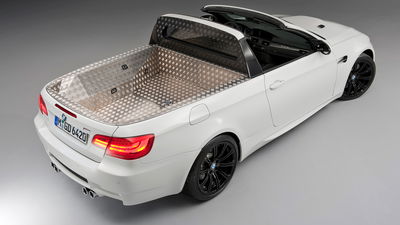Why The Storming Volvo V60 Polestar Marks The End Of An Era

Volvos have always been - and for the most part still are - known for things like safety, solidity and dependability. But, since the mid 1990s, there’s been something nibbling at the edge of this Swedish sensibility. Something racier, and more exciting. It was the 850 T5-R and 850 R that kicked things off, with powerful 2.3-litre five-pot turbo engines and rampant outputs of up to 250bhp.
The V60 Polestar’s T6 engine is about to die, along with the T5
The Swedish firm didn’t end things there, either. A long succession of hot five-cylinder motors followed: the V70, which replaced the 850, had its own scorching T5 variant, as did the pretty C70 coupe. The S60 spawned an R version with all-wheel drive and 300bhp, creating a very left-field BMW M3/Audi S4 alternative in the process. And let’s not forget, the later 2.5-litre Volvo five-pot went on to power the Ford Focus ST, and its more bonkers RS big brother (video review coming soon).

These days, if you want a hot Volvo, you look to Polestar. Volvo’s racing bods have taken the pretty V60 estate, and turned it into the monster you see above, pictured with its 850 R grandfather (big thanks to Rich for lending us his 850!). It’s a superb thing, and I’ll go into why shortly, but there’s a more pressing matter to bring to your attention. It’s powered by the company’s T6 engine - formed from the same modular architecture as the T5 but with an extra cylinder - and it’s about to die. It’ll join the T5 in engine heaven, as that unit is already gone.

The T5 and T6 names will still be used, but the number will refer to a sort of performance index, rather than cylinder count. That’s because the whole Volvo range is moving to four-cylinder units, a move which brings with it the end of the five and six-cylinder engines we love so much.
The more powerful four-pots that are coming through into the range are plenty pokey enough - I’ve driven the V40 T5 and it’s decently quick - but they can’t hope to match the aural drama of the disappearing five and six-cylinder units. All this effectively makes the V60 a last hurrah for epic-sounding fast Volvos, and while the death of its engine and its smaller brother makes me sad, we can at least console ourselves that it makes for a damn good send off.

Sure, it’s not perfect. There’s the six-speed automatic gearbox - tweaked but otherwise the same ‘box used in the rest of the range - which isn’t great, and feels clumsy when compared to the current crop of dual-clutchers and ZF’s eight-speed single-clutch unit. Plus, the response from the paddles is a little sluggish; go for any redline heroics and it’s easy to accidentally hit the rev limiter due to the delay. The boot is surprisingly small, and at just under £49,775, it’s not what you’d call cheap.
That said, it’s worth pointing out that it’s very well specced and there are no optional extras; tick all the necessary options’ boxes on a £41k Audi S4 to match the Volvo’s equipment list, and the price gap reduces dramatically. And what you’re getting from the V60 for the money is rather stonking.
First off, the engine is a gem. I was worried that it might be a little muted and a tad underwhelming, but after taking the keys to one for a week, the car allayed those fears almost immediately as a gnarly six-pot roar from the big twin tail pipes sang out. It does run out of puff at higher revs, but the useful mid-range grunt makes up for this.
It’s quick, too. The T6 gets a new intercooler and turbo here, giving it 345bhp and 369lb ft of torque. Although it has over 1800kg of car to shift about, it’ll still crack 0-62mph in five seconds dead, aided by sticky four-wheel drive traction off the line.

The Haldex four-wheel drive system hasn’t escaped Polestar’s attention, either. It’s been tuned, letting the rear boots in on the action to a greater degree than in other four-wheel drive V60s. But, the most important change when it comes to the handling stakes are the dampers: the V60 Polestar gets a trick set developed by Ohlins. And the ladies and gents at Ohlins know a thing or two about dampers. These are married with 80 per cent stiffer springs, and revised anti-roll bars.
All this results in one seriously quick point-to-point car. Grip levels are almost absurd - you’ll have to try very, very hard to unstick this thing - and there’s something joyous about leaning on that four-wheel drive system to exit corners at greater and greater speeds.
While the stiffer springs do make the ride particularly firm (when you hop over one of those angular speed bumps UK roads are infested with, you certainly know about it), the trade off is a car that remains remarkably tidy whatever you throw at it. But it never feels like it’s taking all this in its stride. Thanks in part to the very stiff suspension, it always feels quite edgy when you’re going quick, even though in reality you’re well within its limits. I like that, as it makes fast road driving exciting.
Despite some flaws it’s a terrific, weapons-grade package, and a fitting way to bring down the curtain on this era of Volvo engines. It’s the sort of car we’ll be looking at a few years down the line and saying ‘they don’t make ‘em like that any more.’














Comments
No comments found.